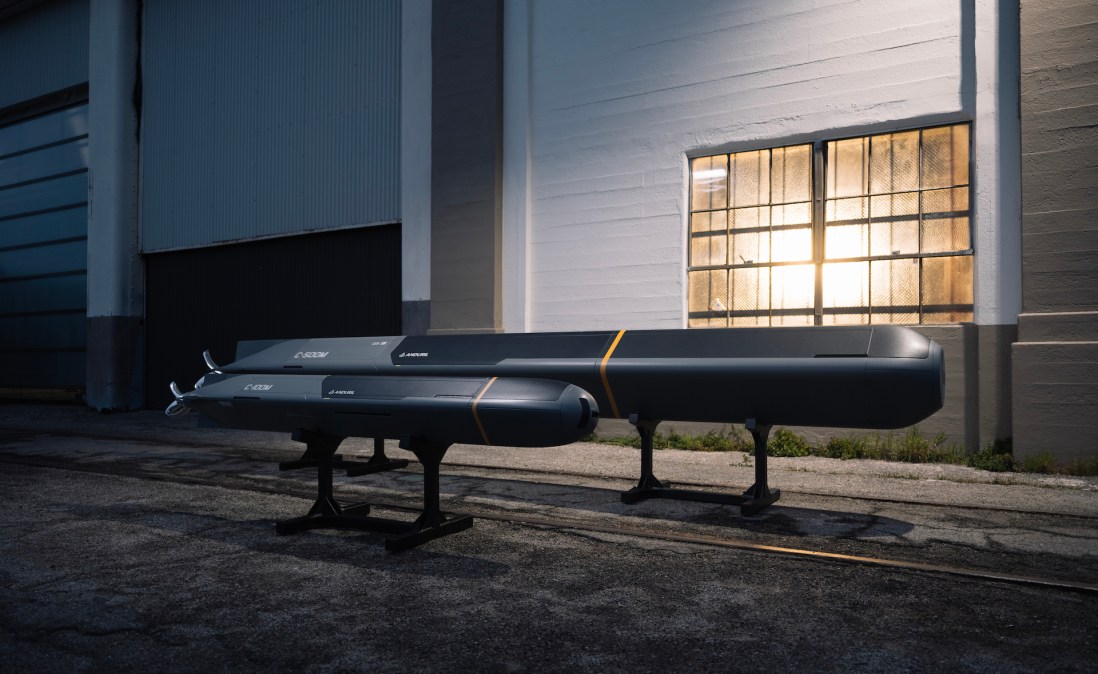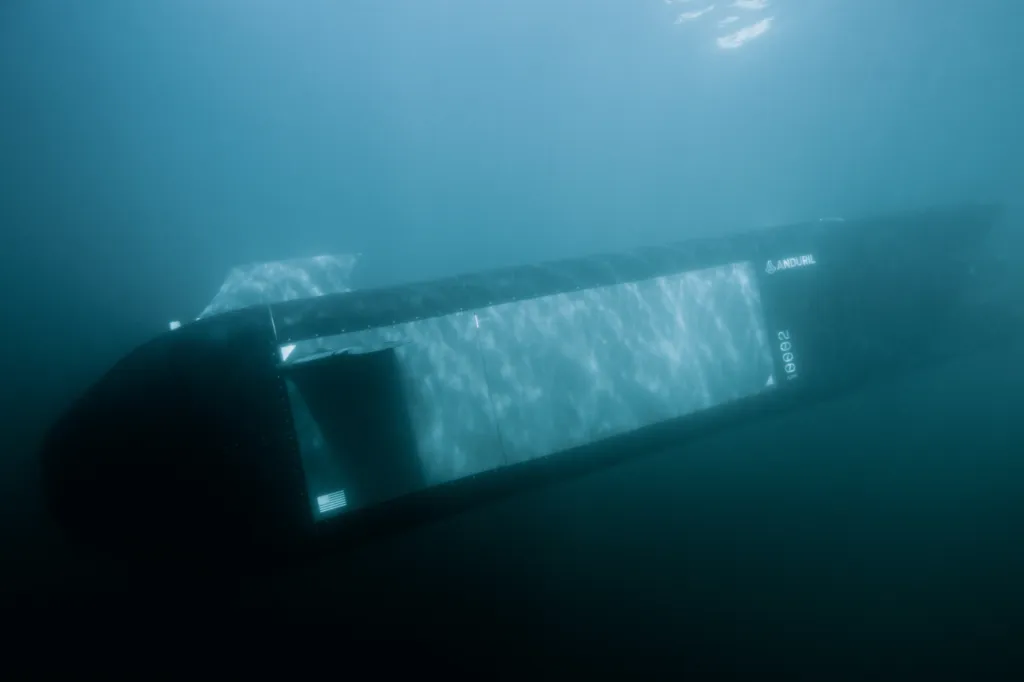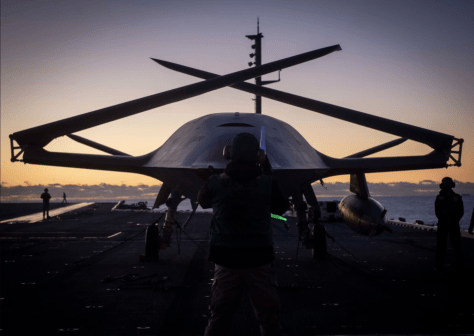Anduril unveils new torpedo that can be launched by underwater drones

Defense contractor Anduril has developed a new torpedo that’s designed to be launched by uncrewed systems, the company is set to announce Monday.
Anduril describes its new Copperhead technology as a “high-speed, software-defined family of Autonomous Underwater Vehicles (AUV) built for delivery by autonomous systems.”
The munition variant has been dubbed Copperhead-M.
“Despite the rapid advances in autonomous vehicles across air, surface, and subsea domains, torpedoes aren’t built at scale and production remains frozen in Cold War-era designs. Current systems are expensive, slow to produce, and tightly coupled to legacy platforms like nuclear submarines and warships. In addition, the U.S. and its allies need far more autonomous, quickly-deployable subsea systems that can integrate with the existing manned fleet and expanding fleet of autonomous subsea, surface, and air vehicles,” the company stated in a press release.
Anduril’s new platform comes in two models — the Copperhead-100 and Copperhead-500 — with different payload capacities.
The 100 model has a 12.75-inch diameter vehicle that’s about 2.5 meters in length and carries 100 pounds dry weight, while the 500 model is 21 inches in diameter and carries roughly 500 pounds dry weight. The top speed for both systems will be more than 30 knots, according to Shane Arnott, vice president of programs and engineering at Anduril.
The hull form is more square-shaped than a traditional torpedo which will make it easier to produce, Arnott told reporters ahead of the official announcement.
“Our production system is aimed at being able to produce very high hundreds to thousands of these systems a year,” he said.
Anduril already builds unmanned submarines, such as the Dive-XL, that the company says will be able to carry “dozens” of the smaller Copperhead-100Ms or “multiple” Copperhead-500Ms.

The contractor also envisions the new torpedoes being air-launched from cargo planes or large drones. An unmanned aerial system in the Group 4 category could carry the Copperhead-100. Because of its heavier weight, a Group 5 UAS would be needed to carry the Copperhead-500, Arnott said.
He noted that the Copperhead uses the company’s Lattice software platform.
“Given our products are software defined with Lattice means that as the threat evolves, we can upgrade our seeking technology so as the threats move and change their signature, etc., we can move with it and at the pace of relevance with just software upgrades alone,” he said.
Anduril is touting the Copperhead-M as a more cost-effective means of attacking adversaries’ unmanned underwater vehicles and uncrewed surface vessels.
Arnott declined to say what the unit cost of the Copperhead will be, but suggested it would be “a fraction” of the cost of existing torpedoes such as the Mk 48.
“As the fight’s changing, subsea is getting much more populated, particularly with enemy UUVs and USVs. It doesn’t really make sense that you would expend a Mark 48, for instance, on an enemy … UUV or a USV, where that munition actually costs multiple times the cost of the UUV,” Arnott said.
He told DefenseScoop that customers would be able to determine how autonomous the Copperheads will be in terms of selecting their targets.
“The systems are set up very similar to out other uncrewed systems, where you can give it parameters that are very much controlled by the customer or by the operator on what the engagement criteria are. So within parameters that are set by the operator, the robot can make decisions on which of the targets that it addresses,” he said.
Last week, Anduril also unveiled a new undersea sensing network capability called Seabed Sentry, which the company says can be deployed by autonomous underwater vehicles.
The contractor describes the tech as “AI-enabled, mobile, undersea sensor nodes networked together for persistent monitoring and real time communication,” that can “sense, process, and communicate critical subsea information at the edge.”
The systems have an endurance of “months to years” and a depth rating of more than 500 meters, according to Anduril.
The technology leverages Lattice software platform and, like the Copperhead, is designed to be deployable by unmanned underwater vehicles, such as the contractor’s Dive family of uncrewed submarines, according to a press release.
Arnott suggested Copperheads will be able to exchange data with their launch platforms, Seabed Sentry nodes and each other.
“The overriding software that sits on top of that is Lattice … that gives the ability for all of those systems to talk to each other,” Arnott said.
“We utilize acoustic technologies as well as some optical in order to talk under the waves. We’ve spent a lot of time in our software making sure that we can deal with the extremely low bandwidth that you get subsea. When you’re in the air domain, it is very easy to communicate, the laws of physics are much kinder to you. But we have spent a lot of time dealing with both low power but also the ability to pack a lot in very, very thin bandwidths, in order to enable that collaborative capability, which is central to all of our subsea products that we’re now going public with across a number of different segments here,” he said.
Anduril has been testing Copperhead and expects to move into production later this year.
“We are in the water with the Copperhead at the moment. We are working through finalization of that before we head into production,” Arnott told reporters.
The unveiling of the technology comes as the Navy is pursuing Project 33 and other initiatives to add more unmanned platforms and firepower to the fleet in preparation for a potential war against China in the Indo-Pacific in the coming years. The service has already been experimenting with using maritime drones to launch loitering munitions.
Arnott declined to say whether the company already has a U.S. military customer for Copperhead-M.
“We cannot talk publicly about who we’re working with on the government side,” he told reporters. “We can’t talk to the contracts.”
He noted that Anduril funded the initial development of the technology with its own money.
Anduril is expected to display the Copperhead system at the Navy League’s Sea-Air-Space conference this week.






